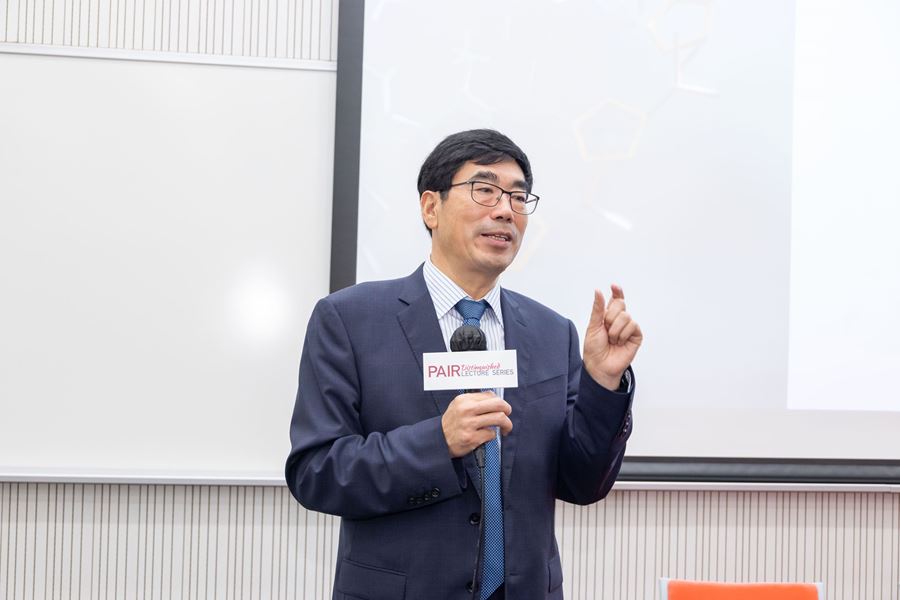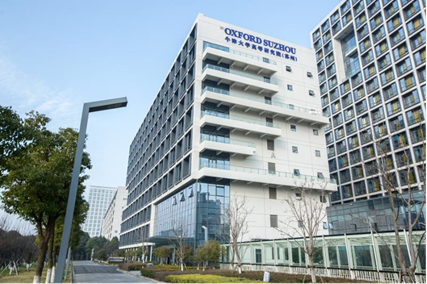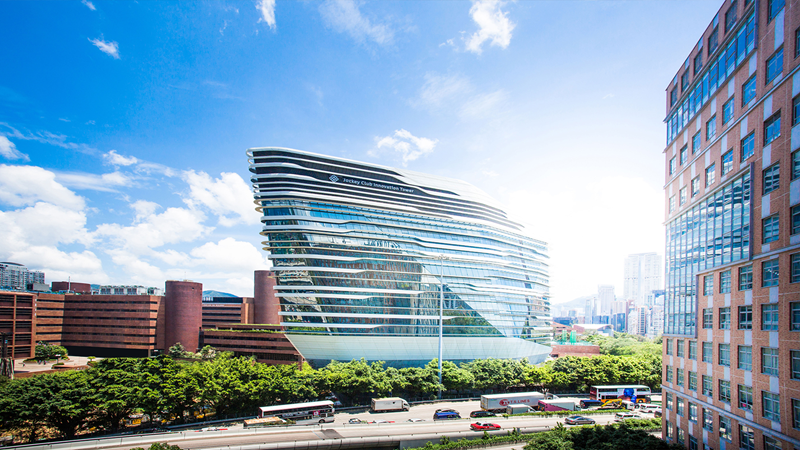Science is global: Expanding international scientific collaborations in a changing research landscape
The upward trajectory of China’s scientific research is an established trend. Nature Index, a database that tracks and ranks institutions and countries by their research outputs, revealed changing patterns in international research partnerships between 2019 and 2022. Many countries have increased their bilateral collaborations with China, and in 2022, for the first time, the country contributed the largest share of articles published in the most influential journals in the natural sciences.
Globally, institutions are increasingly interested in tapping into China’s capabilities as a scientific powerhouse, embarking on joint projects, setting up joint labs and opening overseas offices. In 2018, the University of Oxford opened its first overseas centre for research in physical and engineering sciences in Suzhou, China. The Oxford Suzhou Centre of Advanced Research (OSCAR) is led by Prof. CUI Zhanfeng, Donald Pollock Professor of Chemical Engineering and Oxford University’s first Chinese professor. OSCAR’s opening marked the University’s closer research partnerships with China.
“Science is global,” said Prof. Cui. “Scientists and institutions always want to work with and learn from partners who are well established in the field.” In this Issue, PAIR and Prof. Cui delve into China’s scientific rise in the global research landscape and identify good practices for managing a successful research centre.

Photo taken at the PAIR
distinguished lecture in April 2024, during which Prof. Cui explained
the important role of interdisciplinary research in biomedical
engineering innovations.
Learning from the best to be the best
China is now emerging as a science and technology powerhouse and a trusted research partner for many countries, despite reduced collaboration with some nations due to the geopolitical climate. In general, what are the key drivers of global universities’ growing research partnerships with China?
It is true that research collaboration between China and the United States has become more difficult under the current climate. Aside from that, there are two reasons why countries are eager to collaborate with China in research.
“Science is global. Scientists and institutions always want to work with and learn from partners who are well established in the field.”
The first and most important reason is the quality of research. China’s research quality has improved significantly in recent years. We can see from top publications that the country is producing many science and technology breakthroughs in a number of fields. Science is global. Scientists and institutions always want to work with and learn from partners who are well established in the field.
The second reason is the manufacturing pathway. China is the world’s factory. Universities and institutions pursuing applied research are actively looking to translate and apply their research outcomes. This is the case for Oxford University. The set-up of OSCAR in Suzhou provides an attractive, clear pathway for research translation. Potential manufacturing collaborators are right on our doorstep.
Which research areas would benefit the most from increased collaboration with Chinese institutions and partners?
We have to look at the different collaboration possibilities in terms of sectors and fields, including fundamental science, applied science, engineering, technology, etc. I see all of these as areas where foreign scientists and engineering researchers can benefit from cross-border collaboration.
In fundamental scientific research, experimental sciences rely on support from research facilities. The massive improvement in China’s research facilities in recent years has helped drive scientific research progress. On the applied science side, the country’s huge market makes it a very competitive partner for scientific and engineering collaborations. The surging production of electric vehicles (EVs) in China is a good example of its market competitiveness. The EV batteries and technologies manufactured in China offer very good value for the money, thus giving the country a competitive edge.


Distance is no barrier: Leading remote team collaborations
The Oxford Suzhou Centre of Advanced Research (OSCAR) is poised to foster long-term international collaboration between the UK and China. Could you briefly share with us how international collaboration is pursued at OSCAR?
OSCAR is wholly owned by Oxford University. It is not a joint venture in which two or more parties collaborate to create a new entity. All the project principal investigators at OSCAR are permanent professors at Oxford University. OSCAR researchers are recruited globally and are part of the University. They remain as full-time professors at the University and commit a portion of their time to leading research at OSCAR. This operating model is important for ensuring the quality of OSCAR’s research.
OSCAR has a clear goal of pursuing interdisciplinary research and research commercialisation. How is this goal being achieved at the Centre?
OSCAR was established in 2018. The Centre is still in its early stages of development and is continuing to learn and establish the most effective ways to maximise research outcomes and generate impact.
Many institutions are actively conducting activities related to technology transfer as well as research commercialisation and translation. In my view, what institutions are really looking for behind these efforts is “impact”. There is no point in setting up multiple spin-off companies if none of them become successful.
There may be different ideas about the meaning of “impact”. We can consider it in several dimensions. The first one is academic impact, which refers to recognition. In academia, scholars with well-established positions in the field get noticed more easily, and their proposed concepts and methodologies are normally more likely to be accepted and adopted. The second dimension is social impact, which focuses on the capability to bring change to practices in society, including policies and government decision-making. The third dimension is economic impact, which can be achieved when one’s spin-off company becomes very successful and profitable and therefore makes huge tax contributions.


Collaboration is the key to research impact
How are “research impact” and “interdisciplinarity” infused into management practices at OSCAR?
There is no perfect operating model for research management. OSCAR has inherited Oxford University’s research system and culture, but this does not mean that we encourage interdisciplinary research just for the sake of doing it. Instead, we operate from an engineering perspective and look for ways to apply our research.
“The best way to solve a significant real-world problem is to collaborate.”
Our approach is similar to PolyU’s in the sense that applied research is in the University’s genes. There is a stark contrast between basic scientists and engineering scientists. The former seek to “discover”, while the latter aim to “solve”, that is, to solve specific and interesting scientific problems which cannot be addressed by individual people on their own. To determine whether or not a problem is interesting, we can look at what would be gained by addressing it, and then assemble a team by gathering experts from related disciplines. This is an engineering approach to problem-solving.
The best way to solve a significant real-world problem is to collaborate. This again points to the difference between fundamental science and engineering. Basic science is built on ideas, and a basic scientist may have the chance to make a name for himself or herself with an idea at a certain point in life. Engineering and technology, on the other hand, are based on the accumulation of achievements and experiences.

Going beyond without becoming different: New branches with the same genes
From your experiences at OSCAR, what strategies would you recommend for effectively managing a research institute/centre remotely?
The first and most important thing is to have a clear objective for the centre. The clearer the goal, the easier the management becomes. This requires objective KPIs for the management team in the areas of planning, decision-making and risk assessment.
The second thing is to manage expectations on the part of the funding parties. This requires a solid communication bridge, both externally and internally. The management of the research institute/centre must be able to explain to funders the time frame needed for delivering research outcomes.
The management team also needs to effectively convey messages to the implementation team of the institute/centre. Effective communication, like educational work, is essential; we really want the team to deliver research impact. British universities have a bottom-up culture, and I often seek to convince my colleagues at OSCAR of the worth of a particular project and motivate them to take it on, rather than telling them what to do in a top-down approach.
I think this is also the case for PolyU, since Hong Kong universities have a similar culture. Hence, there is a need to identify strong leadership and undertake close engagements with funding bodies including governments and industries on the mainland, while maintaining a regular review structure and clear goals for the institute/centre.


PolyU has established translational research institutes/centres in various cities in mainland China, with the aim of enhancing PolyU’s translational research and impacts in the country. What are your recommendations for helping these institutes/centres achieve sustainable growth in the long term?
All the research entities which PolyU establishes outside Hong Kong should carry the genes of the University. Their management structure and culture should be inherited from PolyU. It would be good to arrange bilateral exchanges (e.g., visits) for PolyU members based in Hong Kong and those based at mainland research institutes/centres, and provide short-term supervision for researchers who are based at the mainland institutes/centres, so that they understand PolyU’s operations and practices more thoroughly.
Embracing international collaboration on many levels
PAIR is now in its second operating cycle, with a focus on expanding international collaboration. As a member of PAIR’s International Advisory Committee, what tactic would you suggest to PAIR for enlarging its global network?
International collaboration is important for PAIR’s sustainable development. Hong Kong is a small place, and the funding opportunities in the region are limited. International collaboration, not only with foreign universities but also with industries and governments, will give PAIR more pathways by which to explore and secure research funding.
I recommend creating fellowships for academics, post-doctorate researchers and even PhD students. Members of overseas universities could come to PolyU for several months to share the current efforts/technologies at their home institutions with PolyU members and pursue collaborative work.
In academia, professors tend to have greater opportunities for moving around and traveling to different places, but younger researchers should also be supported in this type of international engagement.

Please put at least one valid content allocate to this component.
Please put at least one valid content allocate to this component.
Please put at least one valid content allocate to this component.
Please put at least one valid content allocate to this component.
Please put at least one valid content allocate to this component.
Please put at least one valid content allocate to this component.


